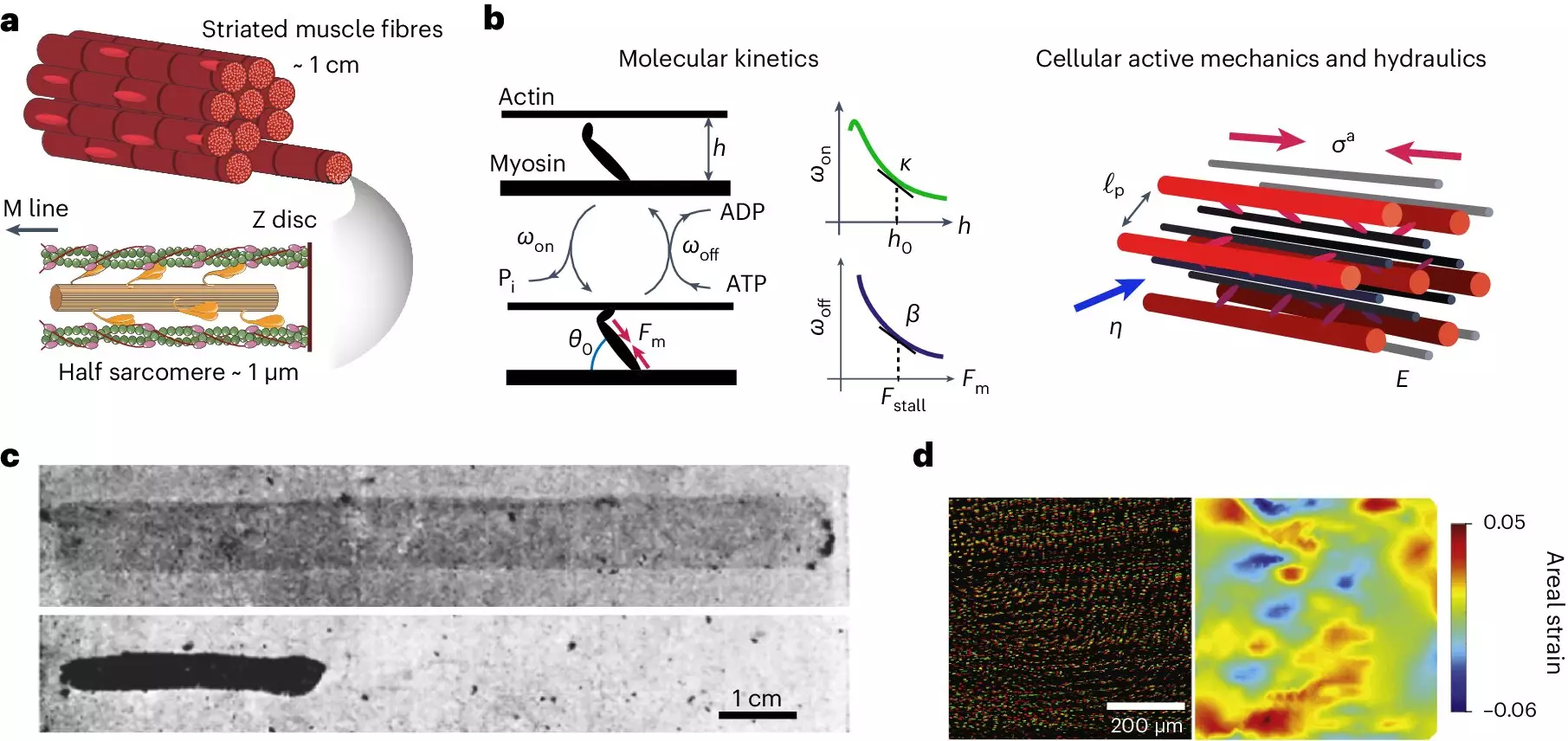Recent advancements in muscle physiology have revealed that the conventional understanding of muscular dynamics needs a paradigm shift. A team from the University of Michigan, along with researchers from Harvard University, has illuminated the role of water flow within muscle fibers, postulating that this simple yet critical component dictates the speed at which muscles can contract. The conventional wisdom that framed muscle contraction predominantly around molecular interactions overlooks the more intricate realities, painting an incomplete picture of muscle functionality.
Muscles are not simply bags of proteins engaging in molecular dance; they are complex structures filled with liquids, intricate networks, and multisystem interactions. Historically, the focus on molecular mechanics the way proteins interact and what those interactions mean for speed and strength has overshadowed the impact of the fluid environment in which these molecules operate. If muscle fibers are viewed solely through the lens of molecular speed, the true essence of their power-generating capabilities remains obscured.
The Active Sponge Metaphor
One of the most striking images that emerge from this research is that of the muscle fiber as an “active sponge.” This notion shifts our perspective, suggesting that muscle fibers, much like sponges, are capable of self-enhancement through internal water movement facilitated by molecular motors such as myosin. This active hydraulic mechanism is pivotal; it not only governs how muscle fibers contract but also underscores the symbiotic relationship between fluid dynamics and muscular performance.
The implications are profound: muscles can be better understood when seen as hydrodynamic entities, where water is not merely a background participant but rather an active player in the orchestration of contraction. This defines a shift toward a more holistic understanding of muscle performance, encouraging researchers and physiologists alike to consider broader elements, beyond mere molecular movements and interactions.
Exploring Limits of Contraction
The study further delves into the limits of muscle contraction, particularly in niche organisms known for their rapid movements, such as insects. Insights gleaned from this research indicate that the faster the motion required, the more significant the role of water flow becomes. Research found that sound-producing muscles, like those of rattlesnakes, operated independently of fluid flows, relying instead on molecular mechanics for rapid contractions. The sophistication of their nervous system controls allows for speed, demonstrating a divergent pathway to muscle efficiency.
Contrast that with the rapid wing movements of certain insects, which are rhythmically controlled beyond what the neural system can handle alone. Here, the importance of internal fluid dynamics comes to the forefront. This analytical slipstream of water within the muscle fibers shapes the rate of contraction—a notion that challenges traditional paradigms and invites a reevaluation of how we examine muscle capabilities across species.
The Elasticity Conundrum
Central to the findings is the concept of “odd elasticity,” a novel characteristic that redefines our understanding of muscle behavior. Traditional elasticity, as seen in materials like rubber bands, adheres to straightforward principles of energy conservation, where energy is retained upon deformation. Contrarily, muscle dynamics defy these expectations by converting chemical energy into mechanical work uniquely. Rather than conserving energy in a predictable manner, muscles rearrange it, allowing them to function as dynamic engines—dispelling notions about energy conservation being elementary in biological systems.
This revelation invites an intriguing question: what if muscles can harness energy in unorthodox ways that spark significant evolutionary advantages? The implicit idea that muscles do not merely react but actively generate energy changes how we consider muscle evolution and adaptation, complicating previously straightforward theories.
A Call for Broader Perspectives
The findings urge physiologists and researchers to take a more integrated approach to muscle studies. Muscles, as complex, hydrating materials, deserve scrutiny beyond molecular mechanics. Instead of isolating individual elements, understanding must embrace the holistic interplay of components—water flow, inner structure, and dynamic motion.
This research enriches our comprehension of animal physiology and may even open avenues for innovations in biomedical engineering and athletic training. As researchers recognize the need for an integrated view of muscle mechanics, we stand on the cusp of redefining physical performance. Ultimately, these revolutionary insights suggest that there’s much more to muscle dynamics than previously thought, calling for an exploration that transcends molecular boundaries and taps into the complex tapestry of life.

